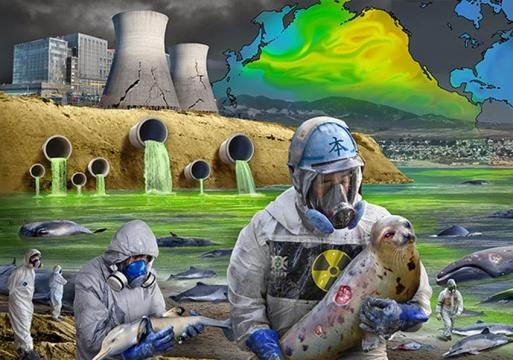|
A strong 6.4 #earthquake struck off the east coast of #Japan's Kanto region on Friday with small tremors felt in 9 Japanese prefectures. So far, there have been no reports of damage or injuries. The Japan Meteorological Agency said there is no threat of a tsunami.
Since Japan sits on top of 4 tectonic plates they normally experience a number of violent quakes each year. However, rigid building codes mean little damage to buildings. However, there is always the exception. Think: 2011. The #fukushima Diichi tsunami after one of the biggest earthquakes on record. After 5 years, Fukushima prefecture, the soil, the buildings, and the storage tanks, continue to spew out radiation. Trace amounts of cesium-134 were found on the North American shores of British Colombia back in 2015 and continue to roll onto our beaches. The amounts are far from dangerous. Drinking water has more cesium than has been found which puts to rest some of the more outlandish conspiracy theories. Interestingly enough, it is not United States or Canadian scientists who have discovered the cesium found in our oceans, it is a group of citizen scientists who have taken up the banner and act in crowd-funded research projects measuring the level of radiation in our oceans. So far, the findings are not alarming, but the social implications are enormous. Much like social journalism, crowd-funded research is made up of a large group of scientists and amateur scientists working together toward a common goal--finding out if Fukushima is indeed poisoning our world. It has been 5 years since the original disaster struck and Fukushima continues to leak radiation into the air and the sea. Cesium, once detected in high levels has leveled off and are thousands of times lower than directly after the earthquake, per Ken Buesseler, a radiochemist with Woods Hole OCRE. He says, "The cesium isotopes were the most abundant after the accident and provided the first indication of whether contamination from Fukushima is present in a seawater samples." He goes on to say, "We think that when there is heavy rain, more cesium, stontium, and other isotopes from the nuclear power plant are carried into the ocean." To date, the costs of cleanup at Fukushima nuclear power plant continue to rise. The ice wall isn't effective and the storage tanks were meant to be a stop-gap, not a solution. The reactor's spent fuel pool assemblies still haven't been removed and it is the same for the melted nuclear fuel. Fukushima provided the first test of robotics in an extreme situation. They failed miserably. Scientists discovered that reactor buildings have thick concrete with re-enforcement rods that shields wireless communication, however the Japanese, known for their technical expertise trudge onward in the hopes of one day clearing a once beautiful prefecture. With Fukushima, they tell us we got lucky, but consider this: I have hypothyroidism, my husband has hyperthyroidism, and our daughter has developed a goiter. We live in California. All these thyroid conditions have developed since Fukushima. Coincidence? Maybe... And then again... Maybe not... Comments are closed.
|
Sign up today for freebies and fun. Grab your chance at signed copies of my paperbacks and free e-books.
For Kobo coupons click here or copy and paste the link into your browser.
http://www.therawfeed.com/stores/kobobooks-com |
Proudly powered by Weebly





 RSS Feed
RSS Feed

